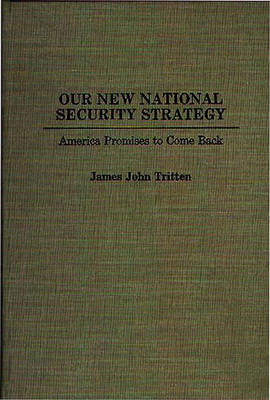Praeger Security International
2 total works
This book is an analysis of President Bush's Regional Defense Strategy first unveiled in Aspen, Colorado, on August 2, 1990. This strategy involves a mix of active, reserve, and reconstitutable forces, and General Colin Powell's Base Force. If implemented, the new strategy and force structure would return significant U.S. ground and air forces to the continental United States where most would be demobilized. In the event of a major crisis, the United States would rely on active and reserve forces for a contingency response, much as was done for Operation Desert Storm. The new national security strategy is based upon the 25 percent budget cut negotiated with Congress, a greatly depleted Russian threat, and a new international security environment that assumes two-years' warning of a European-centered global war with the former USSR.
There are four major critical factors upon which the new strategy depends: (1) the continued decline of the Russians as a threat to world stability; (2) the ability of the intelligence community to meet new challenges; (3) the behavior of the allies and Congress; and (4) the ability of industry to meet new demands. The new strategy is not simply an adjustment to existing defense doctrine or strategy, but rather a fundamental revision of the way the United States has approached defense since 1945. Students and scholars interested in politico-military strategy and government policy will find this book of great interest.
This book analyzes President Bush's new Regional Defense Strategy--the master plan that will guide the transformation of U.S. defense policy for the post-Cold War era. Most recent books on defense prescribe how U.S. policy ought to change or critique past policies without taking Bush's new strategy into account. This book takes a different approach, providing the first comprehensive assessment of the new Regional Defense Strategy, analyzing the consequences for U.S. forces and alliance relations, and examining the political difficulties of transforming President Bush's vision into reality. It explains major changes in U.S. defense doctrine and strategy, force and command structure, future programming requirements, and the major question of how such a significant change was managed in the United States.
Much is new and even radical about the Regional Defense Strategy. Bush has built it around the concept of reconstitution, under which the United States will scrap the forces needed to fight a large-scale conflict and rely on the ability to create new forces if such a conflict looms on the horizon. However, reconstitution will impose demanding requirements on U.S. intelligence and the defense industrial base. Congress will also have an important say over this proposal and the new national security strategy as a whole. So will U.S. allies in Europe and the Far East, some of whom are already moving to recast the strategy's proposals for basing U.S. forces abroad. The primary audience of this book is politico-military strategic planners and those interested in organizational theory, management of change in large organizations, and government policy.

